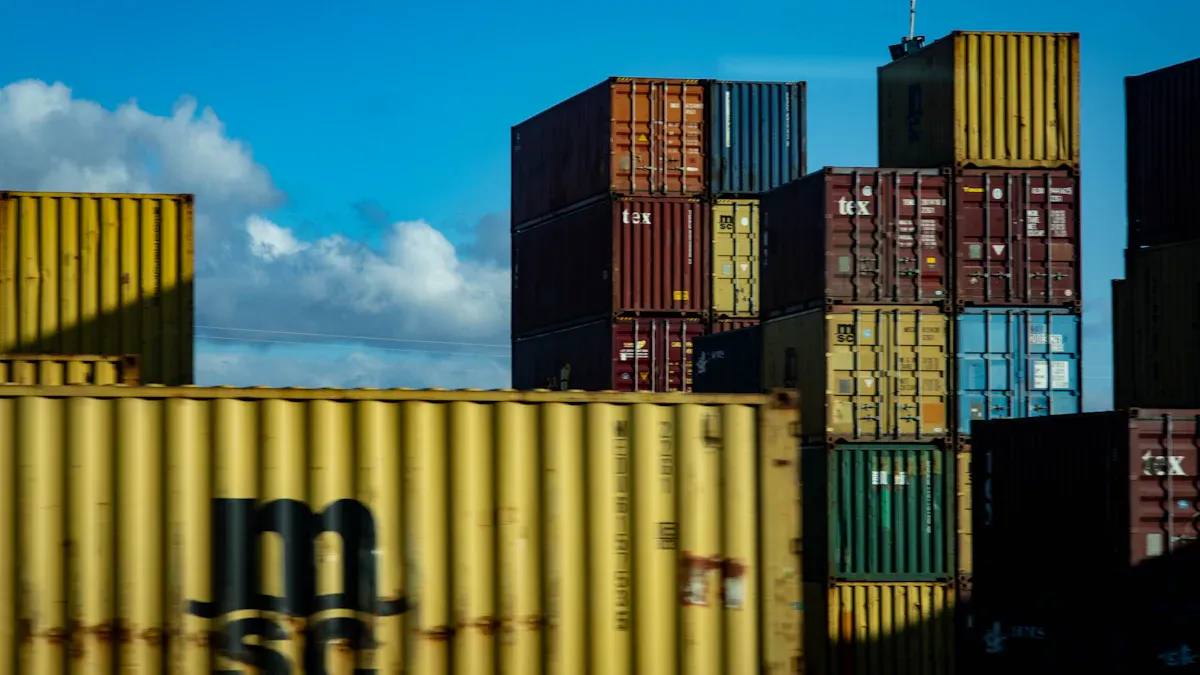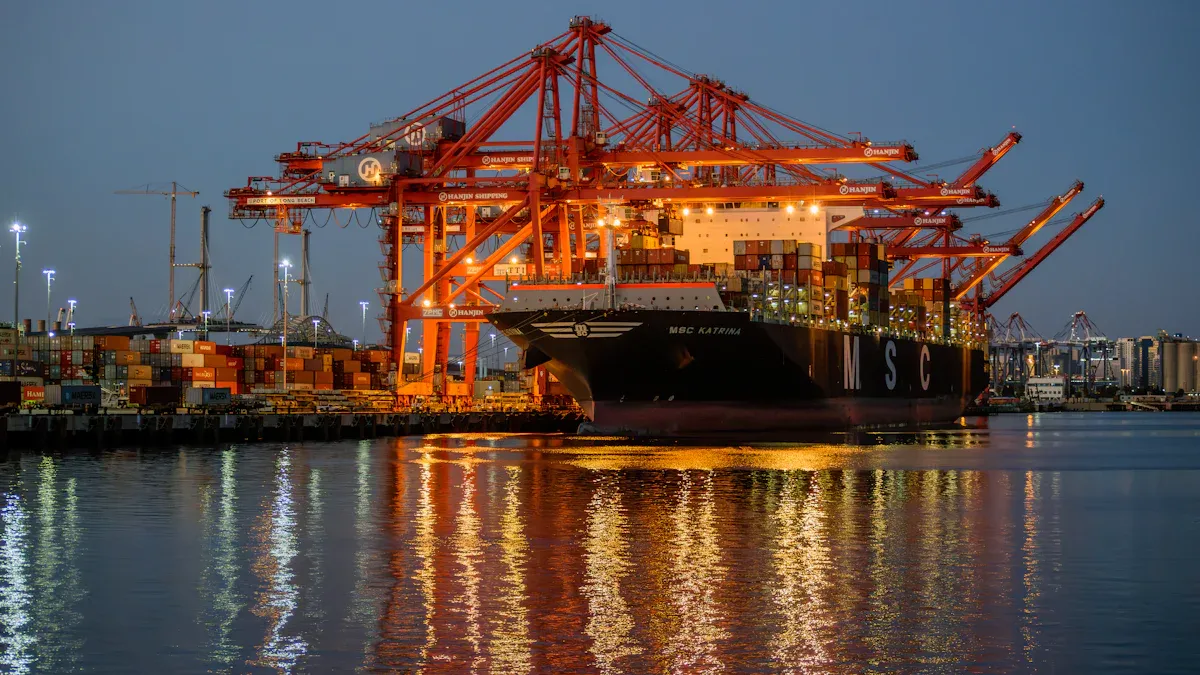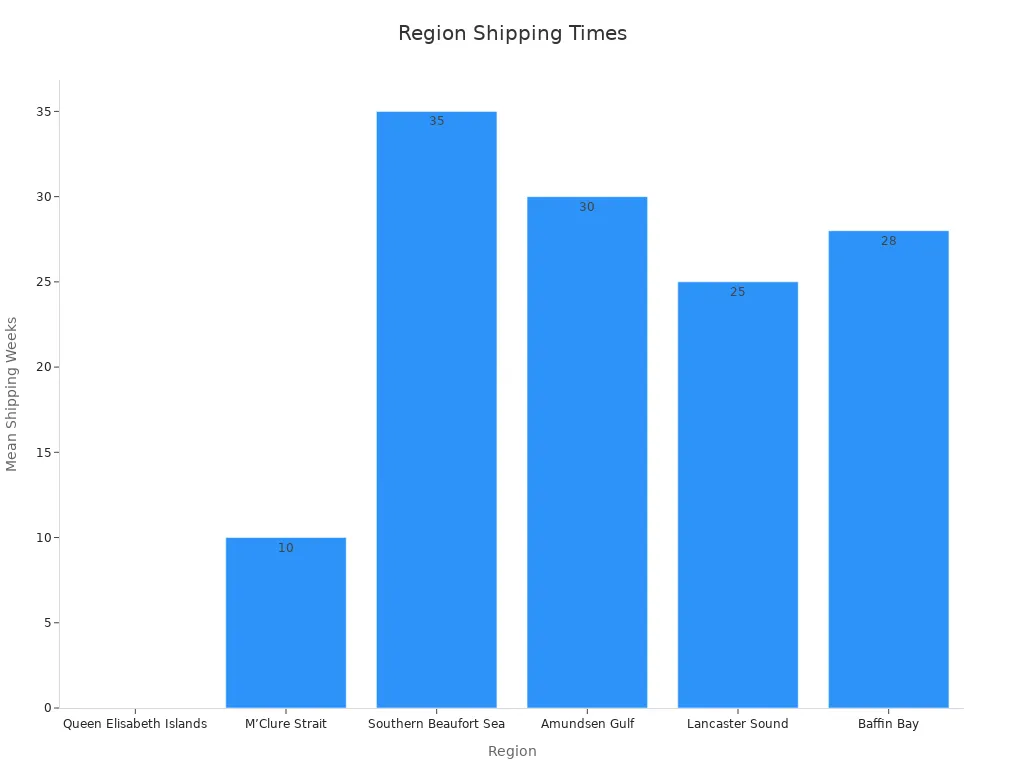Overseas logistics delivery time

Overseas logistics delivery time can vary for many reasons. Shipping times may differ significantly based on the circumstances.
Studies show that delivery time changes due to various factors, leading to substantial differences in overseas logistics delivery time.
Understanding these changes helps you plan more effectively and avoid delays.
Key Takeaways
Learn how long deliveries take with different transport methods. Air shipping is quickest, taking around 3 days. Sea shipping is slower, taking 10-55 days. Pick based on how fast you need it and your budget.
Ship items early before busy times like Christmas to avoid delays. Planning ahead makes sure deliveries arrive on time and keeps customers happy.
Choose trusted shipping companies like JUSDA for good service. They offer options like the China-Europe Express Rail for fast and reliable delivery.
Average delivery times for overseas logistics

Knowing average delivery times for overseas shipping is important. It helps you plan shipments better and avoid problems. Delivery times depend on transport type, location, and routes. Let’s look at these factors more closely.
Delivery times for air freight, sea freight, and rail transport
Transport type affects how fast goods arrive. Air freight is the quickest but costs more. Sea freight is slower but cheaper. Rail transport is in between, balancing speed and price. Here’s a table comparing delivery times:
Freight Method | Average Delivery Time |
|---|---|
Air Freight | 3 days |
Sea Freight | |
Rail Transport | 15-20 days |
Routes also change delivery times. For example:
Route | Average Time |
|---|---|
East Asia - Europe | 30 days |
East Asia - North America East Coast | 25 days |
East Asia - North America West Coast | 15 days |
North America East Coast - Europe | 18 days |
North America West Coast - Europe | 45 days |
Europe - Australia | 50 days |
Pick transport based on your needs. Air freight is best for urgent goods. Sea freight saves money for less urgent items. Rail transport, like JUSDA’s China-Europe Express Rail, is fast and affordable.
Regional differences in international shipping times
Shipping times change by region due to rules, roads, and geography. For example, shipping from China to Europe takes longer than shipping to North America. Here’s a table of average times for common routes:
Route | Average Delivery Time |
|---|---|
China to Australia | |
USA to Singapore | 15 to 25 days |
China to Europe | 30 to 45 days |
China to the UK | 35 to 45 days |
UK to Australia | 30 to 40 days |
Seasons and weather also affect shipping. Arctic areas like the Southern Beaufort Sea have steady shipping seasons. Other places, like the Queen Elisabeth Islands, have more changes. Below is a chart showing these differences:

Knowing these differences helps you plan ahead and avoid delays.
How JUSDA’s China-Europe Express Rail optimizes delivery time
JUSDA’s China-Europe Express Rail makes shipping faster and cheaper. It connects China and Europe using reliable trains. Goods arrive in 15 to 20 days, faster than sea freight and cheaper than air freight.
This service ships many items like electronics, clothes, and medical supplies. JUSDA’s logistics expertise ensures smooth customs and fewer delays. It also uses sea-rail solutions to link Japan, South Korea, and Taiwan to Europe.
Choosing JUSDA’s China-Europe Express Rail gives you speed and savings. It’s a great option for businesses needing dependable shipping.
Factors that affect overseas shipping times
Many things can change how long overseas shipping takes. Knowing these factors helps you plan well and avoid delays. Let’s look at what affects international shipping.
Shipping type and carrier dependability
The shipping type you pick affects delivery speed. Air shipping is fastest but costs more. Sea shipping is slower but cheaper. Rail shipping is in the middle, balancing cost and speed. The carrier’s dependability also matters. Reliable carriers deliver on time and keep performance steady.
Metric | What It Means |
|---|---|
On-time delivery tracking | Checking if deliveries arrive on time using EDI 214. |
Looking at past performance to measure carrier dependability. | |
Proactive alerts | Alerts when carriers don’t meet expected performance. |
Better delivery reliability | Fewer delays and happier customers. |
Big carriers like UPS or FedEx often deliver faster. Their large networks help them avoid delays. Picking a dependable carrier ensures your goods arrive on time.
Distance and location challenges
The distance between places affects shipping time. Longer trips take more time. Some locations have extra challenges like traffic or tricky routes, which can cause delays.
Factor | How It Affects Delivery Times |
|---|---|
Slower speeds and more waiting time delay deliveries. | |
Complex Routing | Too many stops or bad routes add extra miles and time. |
Residential Deliveries | Narrow streets and parking problems make deliveries harder. |
Rural Stops | Long distances in rural areas increase delivery time and cost. |
Planning better routes and thinking about local issues can reduce delays and improve delivery times.
Customs checks and rules
Customs checks are important for international shipping. Delays happen if shipments don’t follow the rules. Each country has its own customs rules. Breaking these rules can slow down the process.
Tip: Always check that your documents are correct to avoid customs delays. Working with experts like JUSDA can make this easier.
Better technology has improved customs processes. A study of 184 companies showed that good IT systems help clear customs faster and improve delivery times.
Busy seasons and holidays
Shipping times change during busy seasons and holidays. Times like Christmas or Black Friday bring more packages, causing delays. Bad weather during these times can also slow things down.
Evidence Type | What It Shows |
|---|---|
Demand Forecasting Accuracy | Retailers often guess wrong about demand during holidays. |
Transportation Capacity Issues | More holiday traffic and demand lead to slower deliveries. |
Logistics Skill Shortage | Not enough workers during holidays makes shipping harder. |
Shipping early and using trusted couriers can help you avoid these problems.
Unexpected problems like weather or strikes
Bad weather or worker strikes can cause big shipping delays. These problems can close ports, slow cargo handling, and extend delivery times.
Study Focus | Key Findings |
|---|---|
Supply chain resilience in maritime transportation | Shows how weather and strikes raise costs and delay shipping. |
Port disruptions and congestion | Explains how strikes and bad weather close ports and slow deliveries. |
Estimating maritime transportation delays | Shares a model to predict delays from unexpected events. |
Having a strong supply chain and watching weather reports can help you prepare. Working with a good logistics company can also reduce risks from these problems.
How to estimate overseas logistics delivery time
Estimating overseas delivery time needs careful planning and smart tools. Using the right methods helps shipments arrive on time and avoids delays.
Using carrier tracking tools for international shipping
Tracking tools make it easy to check shipment progress. These tools show real-time updates, so you know where your package is. Platforms like GoTrack help track containers and predict delivery times using current data. The ClickPost Performance Report shows shipment numbers, earnings, and carrier performance. These tools keep express shipping fast and reliable.
Knowing transit zones and shipping schedules
Transit zones and schedules affect delivery times. Each zone has challenges like traffic or bad weather. Studying schedules helps find quicker and safer routes. Express shipping focuses on speed, making it great for urgent deliveries. Learning about transit zones helps improve shipping plans and keeps logistics smooth.
Considering customs processing times
Customs checks can slow down deliveries. Delays happen if paperwork is wrong or rules aren’t followed. To avoid this, make sure documents are correct and complete. Trusted logistics providers make customs clearance easier and faster. Real-time tracking tools also help monitor customs progress and prevent delays.
Working with JUSDA for better shipping solutions
JUSDA offers shipping plans made for your needs. Their international logistics expertise ensures smooth and fast deliveries. Services like the China-Europe Express Rail give businesses reliable shipping options. Choosing JUSDA lets you use advanced tools and strategies to keep shipments on time and within budget.
Tips to avoid delays in overseas shipping
Picking the best shipping method for your needs
Choose the right shipping method to avoid delays. Air freight is fast for urgent goods. Sea freight works for large shipments that aren’t rushed. Rail shipping balances cost and speed for routes like China-Europe. Consolidated shipping combines packages into one shipment. This method saves time and makes delivery faster. It also improves customer satisfaction. Offering custom shipping choices helps online shoppers feel valued and builds loyalty.
Making sure documents are correct and complete
Wrong or missing documents can slow customs checks. Avoid this by checking all paperwork carefully. Tools like CDI software and NLP systems help keep records organized. Studies show 70% of shipping problems come from bad documentation. Always review shipping forms before sending them to customs. This step ensures rules are followed and keeps shipments moving smoothly.
Working with trusted logistics companies like JUSDA
Reliable logistics companies help prevent shipping delays. JUSDA offers services like the China-Europe Express Rail. This service delivers goods in 15-20 days door-to-door. Their experience with international shipping and customs reduces risks. Picking the cheapest courier isn’t always smart. Focus on reliability to get goods delivered on time and in good condition.
Planning shipments before busy seasons
Busy times like Christmas or Black Friday cause delays. Shipping early avoids these problems. Use tools to predict demand and adjust your schedule. For online businesses, early planning ensures deliveries arrive on time. This keeps customers happy and avoids complaints. Early preparation also lets you book express shipping when needed.
Tracking shipments and staying in touch with carriers
Real-time tracking tools help spot delays early. GPS and RFID show where shipments are located. KPIs like delivery speed and return rates measure carrier performance. Good communication with carriers solves problems quickly. Staying connected keeps shipping smooth and avoids major issues.

JUSDA Solutions
To provide you with professional solutions and quotations.
Delivery times for overseas shipping change for different reasons. Knowing these reasons helps you plan better for shipments. JUSDA provides smart options like the China-Europe Express Rail. These options make international shipping dependable and cut down delays. Picking JUSDA improves delivery speed and makes your supply chain work well.
See Also
Addressing Global Supply Chain Growth Challenges Effectively
Exploring JUSDA's Innovative Logistics Solutions for Manufacturing
Redefining Efficiency Through JUSDA's Logistics Optimization Strategies
Transforming Future Logistics with AI in Supply Chains
Unlocking Logistics Savings: Expert Tips for Supply Chain Success
